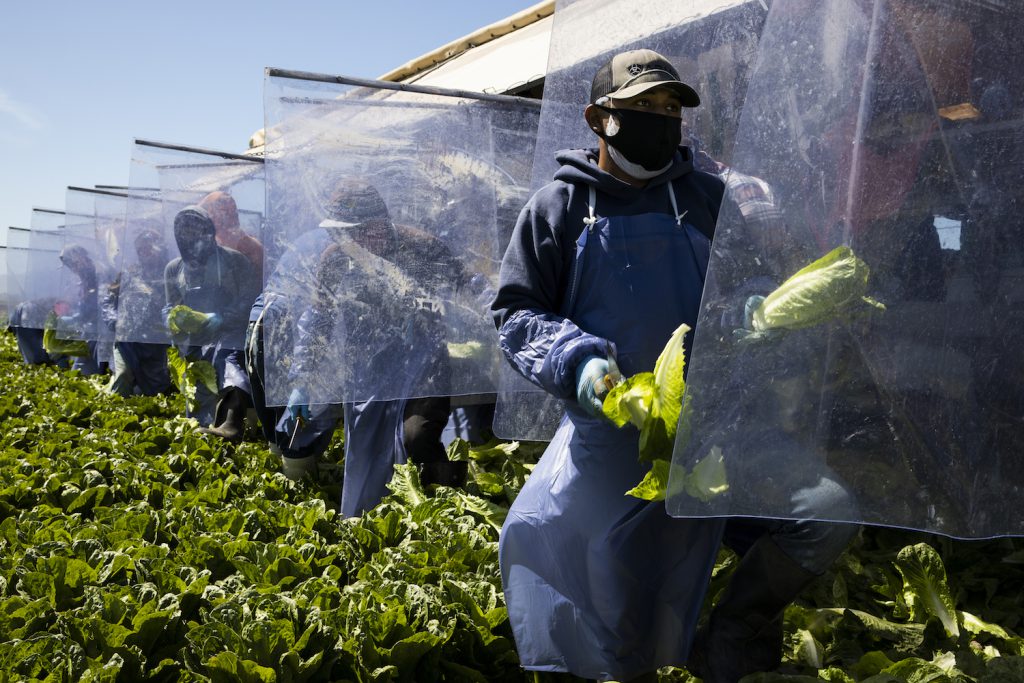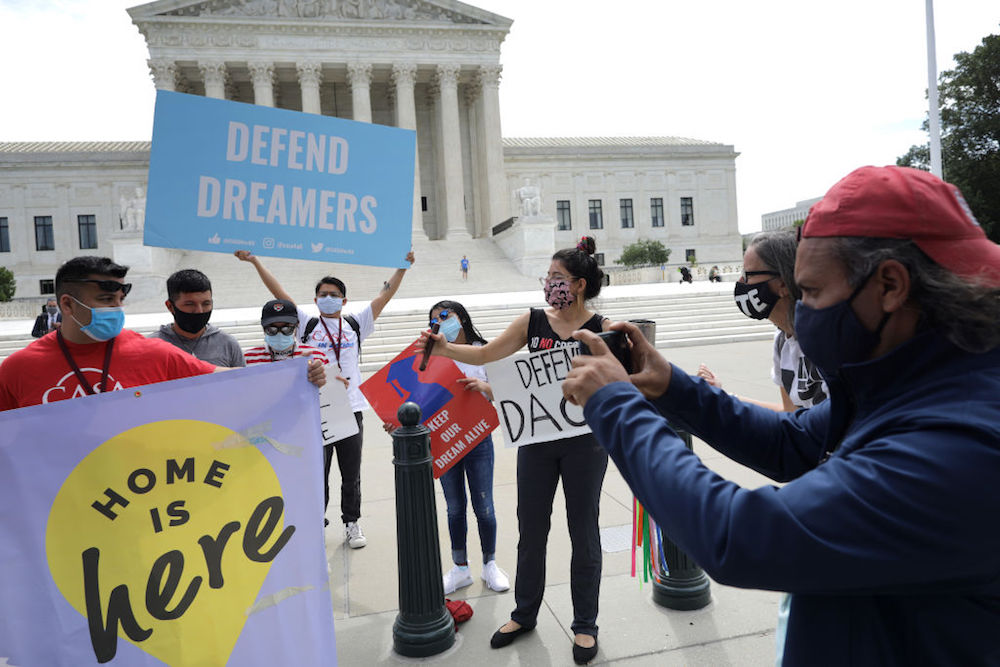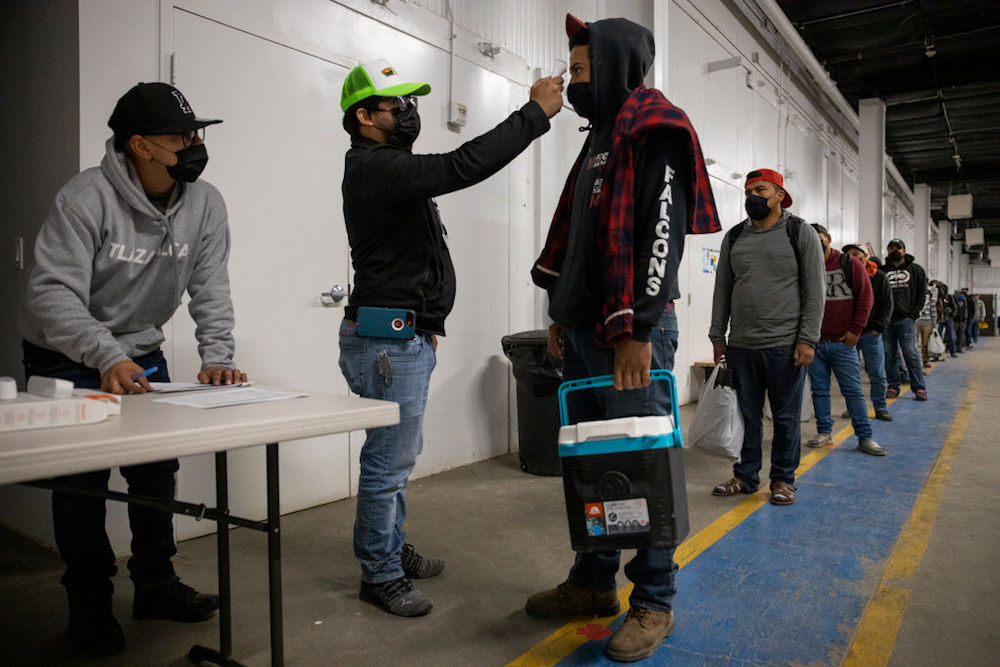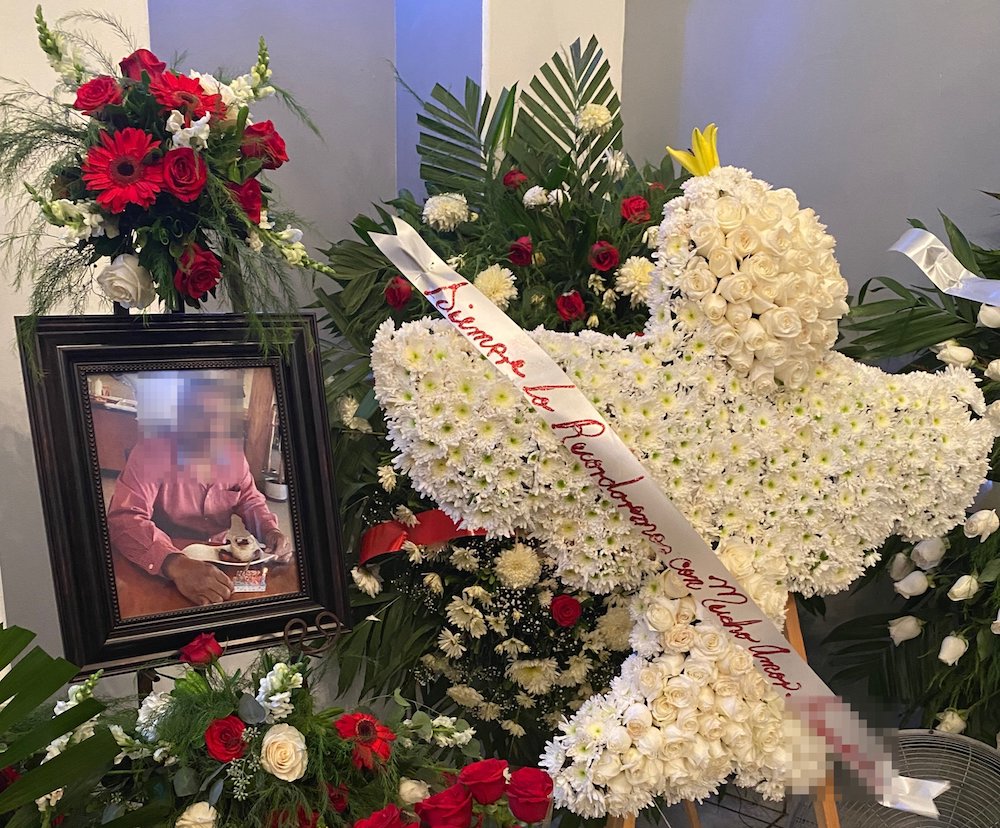Facing COVID-19 as an Undocumented Essential Worker

One afternoon in mid-April, I was sitting at the kitchen table working from home on my computer when the phone rang. I jumped to pick it up. My friend Eloise’s voice came over the line. [1] [1] All names except the author’s have been changed to protect people’s privacy.
“I have some bad news,” she said. “Herminio has been hospitalized because of COVID.”
Eloise had also contracted the virus but had been sent home to recuperate. Her boyfriend of 10 years, Herminio, had to stay in the hospital because of complications with his diabetes.
I struggled to imagine Herminio, with his jovial spirit, stuck in a hospital bed. I knew that his job—driving patients to their doctor’s appointments—put him at risk for contracting COVID-19. But I was still surprised to hear that his case was so serious; despite having diabetes, Herminio was a relatively healthy 52-year-old who didn’t smoke or drink.
When the pandemic hit, like others labeled “essential workers,” Herminio found himself in a precarious position—made even more so because of his undocumented status as an immigrant from Mexico.
I first met Herminio as a participant in a study I’m conducting on undocumented immigrants in San Diego, California, for my doctorate in anthropology. My research focuses on immigrants who have been unable to receive protective Deferred Action for Childhood Arrivals (DACA) status. DACA, a 2012 Executive Order issued by then-President Barack Obama, granted undocumented youth relief from deportation and a two-year renewable work permit, provided they met certain criteria.
I myself am a DACA recipient, so this issue is personal. For the past four years, I’ve seen the Donald Trump administration try to get rid of the program entirely. But I also know that I’m in a relatively privileged position. While DACA recipients like me have received a lot of mainstream news coverage, an estimated 10.3 million undocumented immigrants in the U.S. lack DACA status. These people often get left out of public discussions about immigrant rights and protections—and those disparities have become even more evident during the pandemic.
Many undocumented people cannot work virtually from the comfort of their homes and are ineligible for the stimulus checks and/or unemployment benefits available to U.S. citizens. This leaves them no other option but to continue performing their jobs despite the risks. (California did offer some aid for undocumented immigrants—a one-time grant of US$500 per person or US$1,000 per household. But due to the program’s limited funding, only about 150,000 of the estimated 2 million undocumented immigrants in the state were able to receive assistance.)
My research shows that under current U.S. immigration policies, the lives of many undocumented people have been made expendable. Social scientists often refer to those people with the lowest social status in society as having an “abject status,” meaning they can be “thrown away” or “discarded”—either through deportation or death.
President-elect Joe Biden has pledged to reinstate DACA—a positive first step. But what undocumented immigrants truly need is a pathway to permanent residency and citizenship.
DACA was born out of a desire to help undocumented individuals who were brought to the U.S. as infants, children, or adolescents. These immigrants, known as the “1.5 generation,” don’t fit neatly into first- or second-generation immigrant experiences. (Individuals who leave their home countries to resettle in the U.S. are considered first-generation, while those born in the U.S. to immigrant parents are defined as second-generation.) Members of the 1.5 generation were brought to and immersed in U.S. society at a young age; most do not remember their home countries at all.
Unfortunately, the DACA program did not include everyone in the 1.5 generation. Many were excluded because of their age or the date when they arrived in the U.S., or because of minor legal offenses or other issues.
Others were eligible but chose not to apply or to renew their status in part because of the high costs involved—a required application fee of US$495 paid to U.S. Citizenship and Immigration Services, plus lawyer fees totaling around US$1,000. Of an estimated 1.9 million individuals who were eligible for DACA in 2013, 40 percent did not apply for these or other reasons.
Under current U.S. immigration policies, the lives of many undocumented people have been made expendable.
Some immigrants were in the middle of applying when DACA was rescinded by the Trump administration in September 2017. Although the Supreme Court ruled this June that the program could stay in place, new applications are currently not being accepted.
My research dives into these complexities by examining how undocumented immigrants without DACA status experience the world and how their legal status influences their life decisions.
Like many in the undocumented 1.5 generation, Herminio was not eligible for DACA. Herminio was 13 years old in 1981, when his family brought him to the U.S. from Mexico without documents. This means that Herminio was 44 years old when DACA was announced—past the age cutoff of 31 required to qualify for DACA.
Herminio had missed out on a path to U.S. citizenship before. When he was 17, the Immigration Reform and Control Act of 1986 was passed by Congress. The law allowed certain undocumented immigrants to apply for temporary, and later permanent, legal status. Herminio qualified to apply, but the application cost US$185, plus lawyer fees. That was a lot of money for the young Herminio, who at the time was earning less than minimum wage working under the table at the shipping warehouse of a small newspaper in Los Angeles. He decided not to apply.
Looking back, Herminio seemed to regret making this “immature” decision. He admitted to me that at that age, he would have rather spent what little extra money he had on traveling and going out dancing and to concerts with friends. But he also described the situation at the border as more fluid back then. Unlike today, no giant wall separated San Diego on the U.S. side from Tijuana on the Mexican side, so undocumented people could come and go easily.
Later on, Herminio consulted with various immigration lawyers over other possible paths to citizenship. They all told him that he would not be able to gain legal status because he got caught once crossing the border illegally at around 18 years of age.
As he got older, Hermino moved from Los Angeles to San Diego and had three daughters and two sons—all born in the U.S. He worked long hours as the nighttime distribution manager at another local newspaper company to provide for them.
Unfortunately, this year, the company went under. Herminio lost the job he’d had for over 20 years. He felt devastated—but thankful that his children were grown up and no longer financially dependent on him.
Herminio found a new job earlier this year driving patients to doctor appointments. Earning barely over minimum wage, Herminio was struggling to make ends meet and working overtime to stay afloat. Still, he took great joy in being allowed to help people by driving them to lifesaving medical appointments, such as dialysis.
“When it’s time for my shift to start, I’m so happy that I pretty much skip all the way to my work van,” he told me, smiling broadly over coffee one morning.
But that was, of course, before he got ill.
After Herminio and Eloise contracted COVID-19, I checked in on them often. When we talked again a week after Eloise’s initial call, she was already recuperating. But Herminio’s condition had gone from bad to worse.
“They just put him on a ventilator, and he’s going to have to be put into an induced coma,” Eloise told me, her voice shaking.
Calling a job “essential” does not actually guarantee more pay, better working conditions, or access to benefits like health care.
Herminio, unconscious, breathed through a ventilator for over a month. Then things started to look up. In late May, he came out of the coma and was transferred out of the hospital to a rehabilitation center. We all thought the worst was over.
Then, unexpectedly, Herminio took another turn. The doctors weren’t sure what happened; perhaps he suffered a slight heart attack or a minor stroke. But only five days after arriving at rehab, Herminio was placed in another induced coma and put back on a ventilator.
In early August, Herminio’s organs began to shut down. The doctors told his family that there was nothing more they could do.
The next time I talked to Eloise, she had just finished saying goodbye to Herminio via FaceTime. As a non–family member, she was not allowed in the hospital room, so Herminio’s children had held the phone camera up to their father’s face one last time before his lifesaving machines were turned off.
Eloise started crying over the phone. All I could do at that time was cry with her.
Herminio made sure that those who were ill received medical care. As such, he was an “essential worker”—a label that has come to redefine many low-wage but necessary jobs during the pandemic.
Immigrants perform many of these essential jobs in the U.S., especially in agriculture. On the surface, this rhetorical shift to call them “essential workers” during the pandemic implies a recognition of the social importance of immigrant labor.
However, calling a job “essential” does not actually guarantee more pay, better working conditions, or access to benefits like health care. As a stark example, farm laborers in my home state of California continued working through both the pandemic and devastating wildfires this summer with no wage increases.
Anti-immigrant pundits, especially under the Trump administration, often claim that undocumented immigrants need to “get in line” and wait their turn to receive citizenship. But for many people, there is no such line. Current U.S. immigration law provides no avenue for those like Herminio to legalize their citizenship status.
The lack of comprehensive government protections for undocumented immigrants in the U.S.—before and during the pandemic—meant that Herminio had no choice but to continue earning a living. He risked his life and ultimately lost his life.
I sometimes worry that I, too, will die without ever being able to change my legal status. For some, this concern may seem trivial. After all, why would my citizenship status matter once I’m dead?
Yet many of us who are undocumented share this concern. Herminio once told me that he wished God would not let him die without first fixing his legal status.
When I consider the possibility that I could die without ever having legal immigration status, I think about what that would mean for my family. I could die without ever being able to return to my home country and without ever seeing some of my relatives—who I haven’t seen in person since my parents brought me to the U.S. at the age of 5.
After Herminio’s death at the end of August, his family decided to repatriate his body to Mexico. A crowdfunding campaign on the site GoFundMe raised over US$6,000 to help with funerary costs. Close to 500 people showed up for a celebration of his life in Tijuana—so many that the Mexican police had to stop traffic and escort the funeral procession. While I could not attend Herminio’s funeral in person, I was there in spirit.
During the pandemic, the labor of undocumented immigrants like Herminio may be considered “essential” for the functioning of the U.S. economy. But that means little if the law does not change to protect and honor undocumented immigrants’ lives as a whole.



































